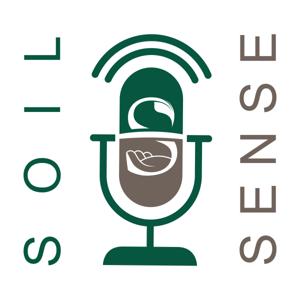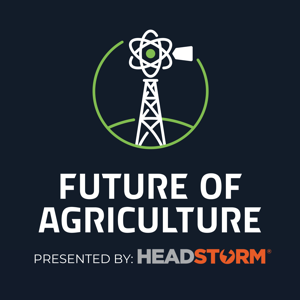
Sign up to save your podcasts
Or




Soil health has been increasingly in the spotlight in recent years, and no topic has been drawing more attention than the concept of soil carbon. Specifically, can farmers optimize the amount of carbon they pull from the air and store in the soil based on farming practices? And can that carbon sequestration reach levels where it’s part of the solution to climate change?
Much of the exuberance surrounding these topics glosses over the science involved. To put this concept into perspective we have on the show Dr. Mark Liebig with the USDA ARS, and Dr. Caley Gasch who is a soil ecologist with North Dakota State University. The audio was recorded at the “Catching Carbon” live workshop put on by the North Dakota Corn Council, NDSU Extension, and USDA.
“It's no surprise that when we think about dealing with the challenges in the future, we've got to look to the soil...It's going to be a really big part in how we create systems that are robust and resilient to these extremes. And so this is why I think soil carbon and soil health are often a pretty good partnership.” - Dr. Mark Liebig
Soil has always been a sink for carbon, but over the decades as more land has been converted to cultivated cropland, we’ve released a lot of that stored carbon back into the atmosphere. Dr. Liebig goes on to make practice suggestions to best support carbons sequestration.
“Increase your biomass production, that's number one, maintain that soil cover, apply organic amendments. On the loss side, we want to minimize that soil disturbance as much as possible. If we can, don't burn that crop residue. That's a really good way to lose a lot of carbon.” Dr. Mark Liebig
Dr. Gasch explains the origin, cyclical nature and different types of carbon available in the soil. Another prominent variable in the success of carbon sequestration is the weather and its effects on the soil. Because of all of these factors, changing and verifying the soil’s carbon material is a slow and involved process.
“A 1% increase in organic carbon takes between 10 and 15 years….and that would be under best management practices, minimal tillage, and maximum plant productivity.” - Dr. Caley Gasch
This Week on Soil Sense:
Connect with Soil Sense
Soil Sense Podcast is hosted by Tim Hammerich of the Future of Agriculture Podcast.
 View all episodes
View all episodes


 By Tim Hammerich and Abbey Wick, Ph.D.
By Tim Hammerich and Abbey Wick, Ph.D.




4.8
5353 ratings

Soil health has been increasingly in the spotlight in recent years, and no topic has been drawing more attention than the concept of soil carbon. Specifically, can farmers optimize the amount of carbon they pull from the air and store in the soil based on farming practices? And can that carbon sequestration reach levels where it’s part of the solution to climate change?
Much of the exuberance surrounding these topics glosses over the science involved. To put this concept into perspective we have on the show Dr. Mark Liebig with the USDA ARS, and Dr. Caley Gasch who is a soil ecologist with North Dakota State University. The audio was recorded at the “Catching Carbon” live workshop put on by the North Dakota Corn Council, NDSU Extension, and USDA.
“It's no surprise that when we think about dealing with the challenges in the future, we've got to look to the soil...It's going to be a really big part in how we create systems that are robust and resilient to these extremes. And so this is why I think soil carbon and soil health are often a pretty good partnership.” - Dr. Mark Liebig
Soil has always been a sink for carbon, but over the decades as more land has been converted to cultivated cropland, we’ve released a lot of that stored carbon back into the atmosphere. Dr. Liebig goes on to make practice suggestions to best support carbons sequestration.
“Increase your biomass production, that's number one, maintain that soil cover, apply organic amendments. On the loss side, we want to minimize that soil disturbance as much as possible. If we can, don't burn that crop residue. That's a really good way to lose a lot of carbon.” Dr. Mark Liebig
Dr. Gasch explains the origin, cyclical nature and different types of carbon available in the soil. Another prominent variable in the success of carbon sequestration is the weather and its effects on the soil. Because of all of these factors, changing and verifying the soil’s carbon material is a slow and involved process.
“A 1% increase in organic carbon takes between 10 and 15 years….and that would be under best management practices, minimal tillage, and maximum plant productivity.” - Dr. Caley Gasch
This Week on Soil Sense:
Connect with Soil Sense
Soil Sense Podcast is hosted by Tim Hammerich of the Future of Agriculture Podcast.

43,594 Listeners

254 Listeners

254 Listeners